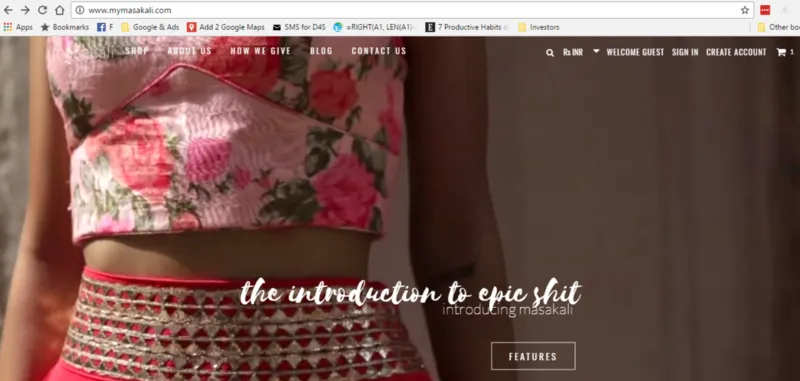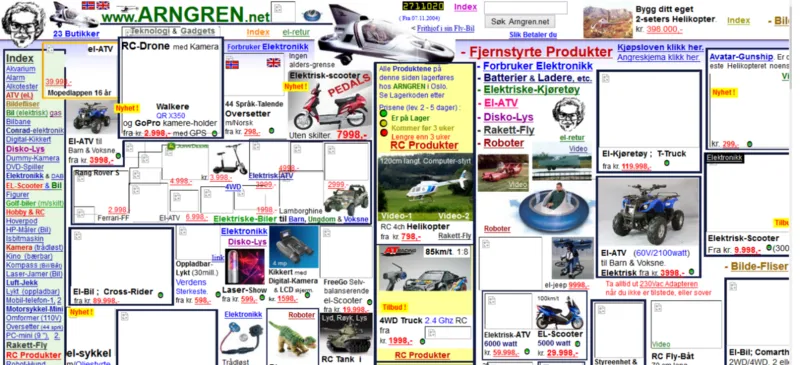

Increase your E-Commerce Sales Focusing on these 4 Areas
Let me first congratulate you for being in a trillion dollar e-commerce industry which is also the fastest growing and one of the most valuable industries.
So now you got on train having your own e-commerce store, and next is to boost sales and see more profits.
By the way, this post is for the people who already has their own e-commerce store and in a phase to increase their sales. If you don’t have an e-commerce store yet, get yourself one here before the train departs and come back to grow further.
There are 4 things that you should work on to improve your sales.
Audience
Decide which audience segment you are going to target. Find their demographics like age, gender, location, purchasing power, likes, hangout places, online availability, habits, etc., try to gather as many information as possible about them. It’s easier to sell when you know the maximum about your audience.
To give an idea, if you are going to sell TVs and your audience prefer LED TVs only, you don’t have to focus on other type of TVs. You know where the sales is.
When a retailer opens a physical store, they mostly knew what products has demand, since their target customers are local and they are naturally updated with the trend. That’s also actually a restriction that they could sell only to the local customers.
Through online e-commerce, you can sell to much wider choice. You shall target audience from any part of the world and the process of selling is the same.
Metrics to consider while choosing audience:
1. Location — International Audience or Local? If international, do you got the shipping facility that is good? If local, is that a big enough market for you to sustain?
2. Exposure — Are you more exposed to local audience or international audience? Choose the ones you are confident about.
3. Disposable Income — No reason if you choose a segment that has lower disposable income unless you sell something that is essential and still has a room for profit. Choose audience who are ready to spend on whatever you want to sell.
When you zeroed on the audience you are going to sell, it will become easier to select the products.
Products
Find what are the stuff they buy and where you can fill a gap. There are few interesting things that you should keep in mind while choosing the products.
Product Demand: Come up with a product that your audience are ready to buy. Selling a product that nobody is interested in buying don’t make sense. Analyse the demand and the competition level.
There are many people selling products that has very low or no demand at all. If you observe, they would have spent huge in stocks but would be just sitting idle not knowing what further action to be taken since their money would be already locked in those products.
Choosing a product that has demand would any way make itself fly out of shelf and get you back your money plus extra. Products that are of low demand would just sit idle until the right customer comes in with a right demand.
So to keep the rotation high, always choose products that has high demand although you may need to compromise on the profits side.
Product Availability: How many times have you seen ‘Sold Out’ sign and got frustrated? Flipkart’s Big Billion day havoc is one prime example for such issues. A hell lot of items were available at great discounts, but when buyers clicked on it to buy- oyeee, it’s ‘Sold out’.
Frustration were all over internet and clearly shown that buyers didn’t really like that sign. Now that’s a different story as they had a server issues and quick sale out combined with poor sales predictability.
But the customer frustration issue is common between all the ‘sold-out’ reasons.
You have to choose products that is always available to trade. Don’t create a regular audience for a product that wouldn’t be available regularly. This is the reason you see not many stores sell surplus goods although they will get it at a great deal. Surplus goods are those rejected pieces in factories for issues like pin-hole, low thread count, etc., that wouldn’t be usually visible.
Also while choosing a product, choose the right wholesaler whom you buy from. You need a long term support and good relationship with the wholesalers to consistently provide right products at right price.
Product Margin: It’s very important to know the profit margin you’ll have before hand. It will let you determine if the sales will get you a profit after all the expenses like packing & shipping charges, payment gateway charges, etc.,
Basically, if it’s an high demand product with huge competition, the margin would be lower and if it’s a low demand one with low competition, profit would be usually higher.
One of my friends has got a chance to sell her handmade jewelry products via a tele-shopping channel Naaptol. Her product was on air for 45 days and she got 8000 orders and it was all selling at Rs.999 each.
That’s a good thing, right?
Sadly, the profit she made from every sale is very less considering the expenses like Naaptol’s high profit share, ad-time charges, packing & courier charges, etc., She is better off selling in other means and stopped selling on TV.
While the product margin may not determine the turnover, it definitely impact in your own survival. Give it a good thinking.
Do a little math.
Find the cost of the product you pay to wholesaler, add a margin that you think would make your product price-competitive and subtract all the expenses. Still you get good profit for all the efforts you had put in? that’s a good find.
Website Designing
Your e-commerce website is your retail store where people visit to explore your products and make a purchasing decision.
I have seen a lot of websites that hasn’t given enough care from the design perspective. The products and the pricing used to be really good, but that alone doesn’t matter. People don’t see your face directly, they need a trust built before making a purchase decision. And design plays a huge part in building trust.
Have you seen local retail stores? hows their store setup? interior designing? lighting? false ceiling? products display? mannequins? furnitures? And they must have spent lacs in them, if not crores.
Now comparing with that, how much efforts should we put on e-commerce designing? People usually decide in 4-seconds if they want to spend more time on your site or not. And luckily, the expenses to create a beautiful e-commerce store is very less as it mostly requires the time of a store owner and the designer. The time, is the most important thing we should invest here.
Let’s see some of the good design and badly designed websites:
Good One

Another Good One

Bad One

Marketing Strategy
Marketing is important for any business. Except fortunate few, most business requires it.
If you are in a business to grow, you shouldn’t ignore marketing. And you need a proper strategy to market your services or products.
Marketing is not just limited to tv channels, papers or radios. Internet and mobile are the new-age marketing platforms that’s disrupting marketing in a way like never before.
And for smaller businesses that doesn’t have a budget to go on mass media, digital marketing is a blessing. You decide where you spend on and how much you want to spend.
Some of the most popular digital marketing platforms are Google Adwords, Facebook Ads, Pinterest Ads, Linkedin Ads, Twitter Ads, etc., You shall target people based on their demographics or keywords, whichever you think is good for your business.
But launching a business without a proper marketing strategy has a very lower chance of sustaining.
Marketing Commitment
When you decide to market, do not make a regular mistake that every business marketing newly does. That is expecting to see the result in the first day or first week and stopping marketing campaign right away when they are not satisfied.
Marketing is best if you are committed for a long term campaigns. Run campaigns constantly for at least 5 to 6 months and allot some monthly budget.
As digital marketing sites provide you handy tools and ad variations, you could easily monitor which campaigns is working and which is not. Keep monitoring the results for minimum thrice a day to ensure that you are spending on right ads until you are comfortable.
New age SAAS platforms understood it and has gone an extra mile to make marketing easier for their customers, for ex: Zepo, which is basically an e-commerce solutions platform, has launched an integrated marketing solutions for their customers, click here to see.
These 4 pillars are strongest for any e-commerce platforms to sustain and grow.
If you have any suggestion, please share in the comment section below.





